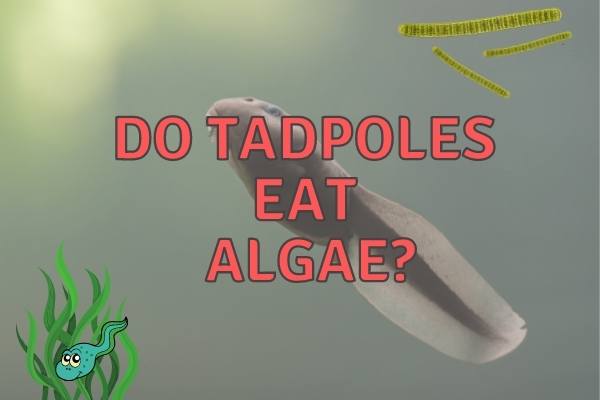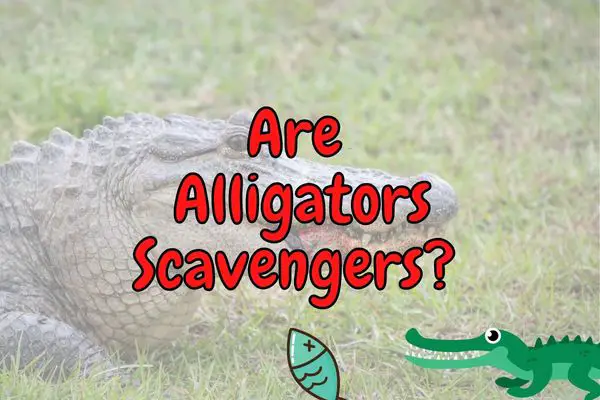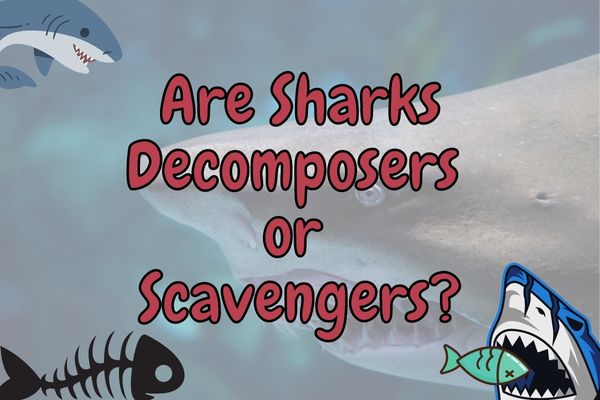Tadpoles are the larvae stage of frogs and they are too small to eat insects like grown up frogs do. Therefore they eat a variety of smaller particles floating around in the water or attached to surfaces that they can lick off!
Tadpoles eat mostly microorganisms and they majority of these are algae and bacteria. However, they do also eat other aquatic microorganisms like zooplankton, protozoa and cyanobacteria.
Algae are microorganisms but do also include seaweeds, which are also sometimes referred to as macro algae.
The difference between microalgae and macroalgae is that seaweed is just (roughly speaking) microalgae that adhere together to form a multicellular organism – a bit like mushrooms, but just made from plant cells instead of fungi cells.
All algae are autotrophs, meaning that they get their energy from the sun rather than through other organisms.
Therefore the tadpoles, and other animals that eat algae, are heterotrophic consumers – they get their food from other organisms that get their energy from the sun (or chemicals, but that is more rare!).
Algae is on the top of the list (see table below) when it comes to the dietary preferences of tadpoles. They are often seen swimming near the water surface because this is where the light is strongest and therefore where most algae are found! Tadpoles are also more active and sleep less when the conditions are bright.
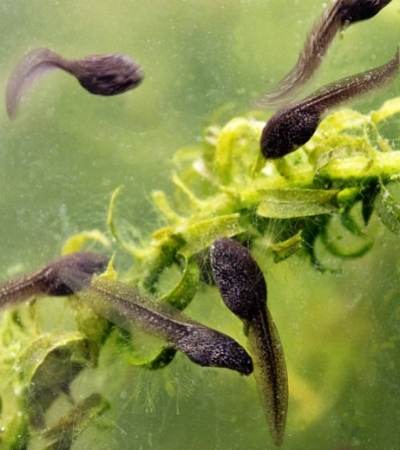
Seaweeds are also algae, but tadpoles cannot easily digest the larger pieces of seaweed so they predominantly eat the layers of single-celled algae flowing freely in the water or growing as a layer on water plants, seaweed or any other (wood, rock) surface.
Some would argue that tadpoles also eat plants, but in facts they simply engulf on the layers of microorganisms growing on the plants.
Do Tadpoles Eat Seaweed?
Seaweeds, despite their name, are not actually “weeds” but are a form of algae. As we’ve discussed in the sections above, tadpoles have a dietary preference for algae, especially the ones present in their freshwater environments. But when it comes to seaweed, the situation is a bit more nuanced.
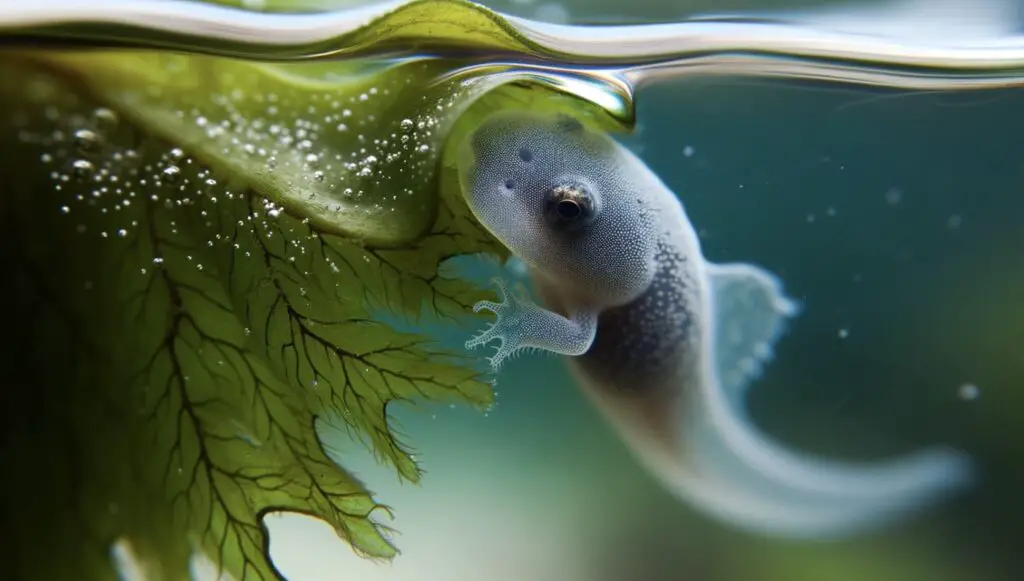
Seaweeds are predominantly found in marine environments, meaning saltwater locations such as oceans and seas. Tadpoles, on the other hand, are freshwater creatures and typically inhabit ponds, lakes, and slow-moving streams. Thus, under natural circumstances, tadpoles wouldn’t come across seaweed as part of their regular diet.
However, the main component of seaweeds is algae, which tadpoles certainly consume. When we refer to seaweeds in the context of a tadpole’s diet, it is essential to differentiate between macroalgae (like seaweeds) and microalgae. The former is more complex and multicellular, while the latter is typically single-celled and can be found floating in freshwater bodies.
Given the chance, tadpoles might nibble on seaweed, but they would predominantly feed on the layers of single-celled algae and other microorganisms present on its surface. The structure of seaweed might be harder for them to digest compared to the freely floating algae in the water. Moreover, the salt content in seaweed, if not adequately rinsed, might not be suitable for tadpoles.
In summary, while tadpoles can ingest parts of seaweed, it’s not their primary food source. They prefer the single-celled algae and microorganisms that grow in their natural freshwater habitats. If you’re considering feeding seaweed to tadpoles in a controlled environment, ensure it’s properly cleaned and devoid of salt.
Do Tadpoles Eat String Algae?
Yes, tadpoles will eat string algae if available. String algae are structures of single celled algae attached together to form strings. String algae grow rapidly, given warm and sunny conditions, and provide excellent nutrition for tadpoles.
String algae are basically green algae that adhere together and adhere to surfaces such as water plants or rocks.
It can also attach itself to other types of objects in the water such as tree roots, and floating wood.
String algae is an excellent source of nutrition for tadpoles because it is readily available in the aquatic environment where they live. It also contains antioxidants, vitamins A & C, calcium and iron, and essential electrolytes.
What Else Do Tadpoles Eat?
The diet of tadpoles is limited by their size as they cannot actually hunt for insects yet. Therefore they are limited to what is in the water and fits in their mouth!
Therefore, tadpoles eat microorganisms like algae, plankton, bacteria, and Euglena as well as some tiny worms, insects, and their eggs.
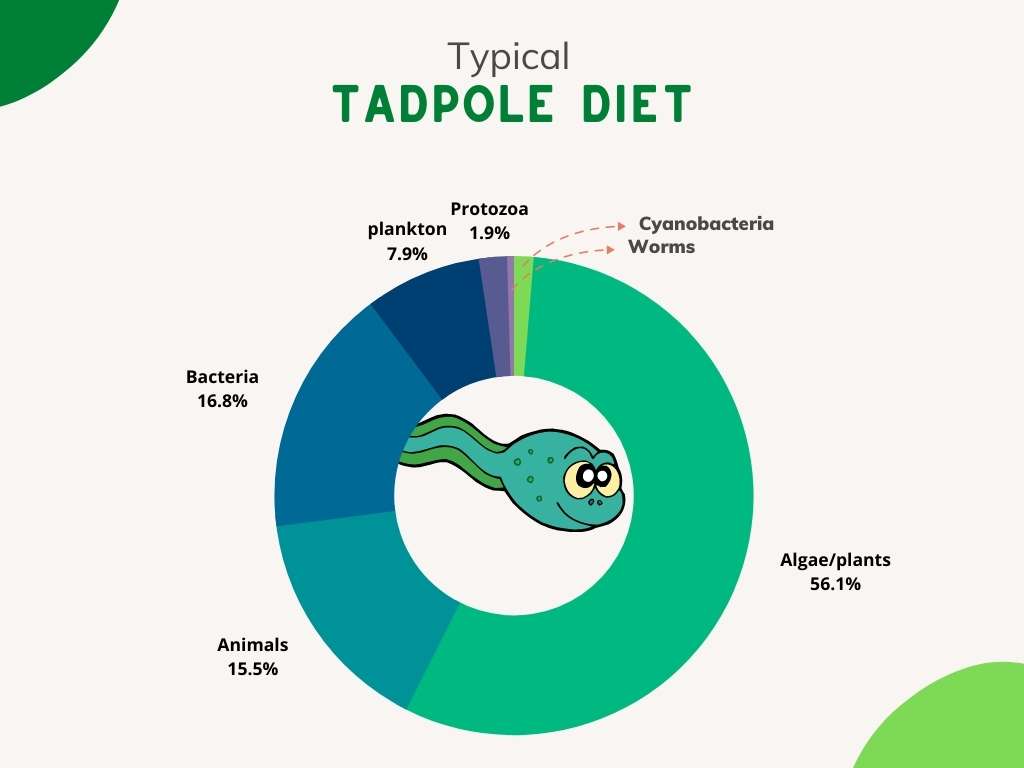
Tadpoles eat a lot of microscopic organisms such as algae and cyanobacteria, but almost as many bacteria and microscopic animals (zooplankton and protozoa).
Here is the full list of what food items have been discovered in the bellies of bullfrog tadpoles:
| Organism name | Percent in diet | Type of organism |
| Spirogyra | 17.98 | Algae |
| Closterium | 16.7 | Bacteria |
| Scenedesmus | 16.07 | Algae |
| Misch. Eggs | 12.46 | Animal |
| Oedogonium | 4.59 | Algae |
| Staurastrum | 3.89 | Algae |
| Euastrum | 3.68 | Algae |
| Pinnularia | 3.45 | plankton |
| Navicula | 3.14 | plankton |
| Staurodesmus | 2.98 | Algae |
| Pediastrum | 2.59 | Algae |
| Euglena | 1.88 | Protozoa |
| Rotifera | 1.54 | Animal |
| Chrococcus | 1.22 | Cyanobacteria |
| Volvox | 1.09 | Algae |
| Dinobryon | 1 | Algae |
| Cosmarium | 0.98 | Algae |
| Zygnema | 0.82 | Algae |
| Asterionella | 0.74 | plankton |
| Calanoida | 0.56 | Animal |
| Nitzchia | 0.49 | plankton |
| Nematoda | 0.45 | Worm |
| Ostracoda | 0.38 | Animal |
| Chironomidae | 0.2 | Insect |
| Cladocera | 0.14 | Animal |
| Acari | 0.08 | Animal |
| Oscillatoria | 0.08 | Cyanobacteria |
| Fish scales | 0.05 | Animal |
| Ancylidae | 0.05 | Snail |
| Amphipoda | 0.01 | Animal |
| Spirulina | 0.01 | Cyanobacteria |
| Other larvae | 0.01 | Worm |
Whereas an adult frog is an amphibian, which means it can live in water and on land, tadpoles only live and eat in the water and therefore only have access to the organisms in a freshwater environment.
As they grow into adult frogs, they start to eat more animal matter such as smaller worms, spiders, and all kinds of small insects and insect eggs, such as mosquito eggs, that are layed or fall into the water.
If tadpoles are starving for extended periods, they may even feed on each other, effectively becoming cannibals, to secure that at least some individuals survive long enough to develop into frogs and reproduce.
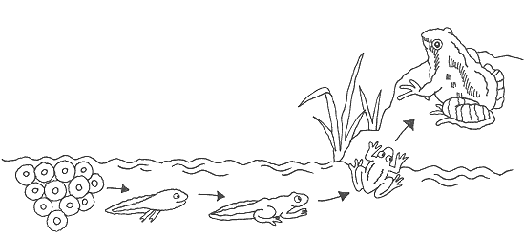
As soon as the tadpole develops into a frog and enters land, they will no longer feed on algae but transit into a purely insect based diet.
Conclusions
Algae are indeed one of the main food items eaten by tadpoles. Along with other microorganisms like bacteria and protozoa, they make up the majority of the tadpole diet.
It is important to understand that tadpoles, just like frogs, do not have the digestive enzymes to break down fresh plant material.
Therefore they mostly rely on microorganisms to break down the plant material for them and may therefore eat plants covered in bacteria or simply extract the algae and bacteria covering the surface of decaying plant material.
Whereas tadpoles eat mostly living food material, they may also function as decomposers when eating decaying plant particles are dead algae floating around in the water.

